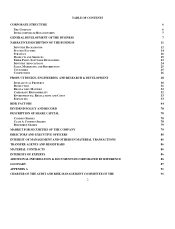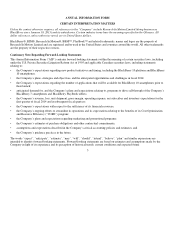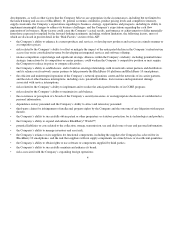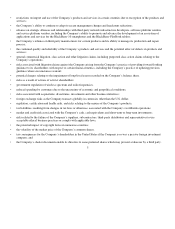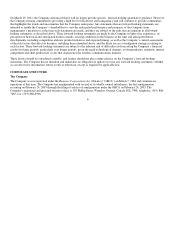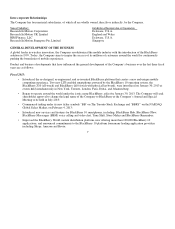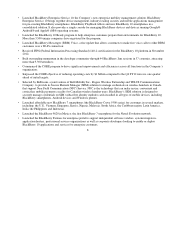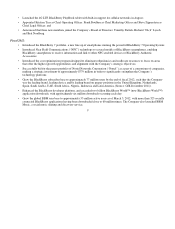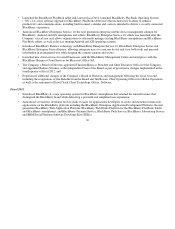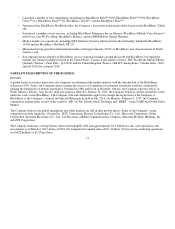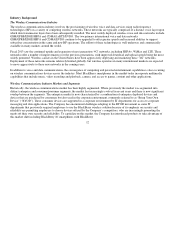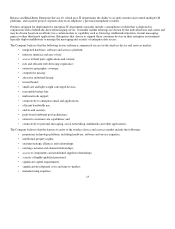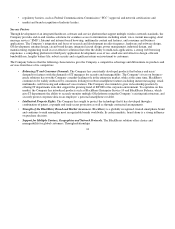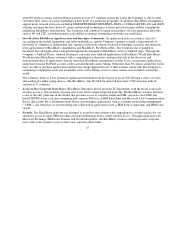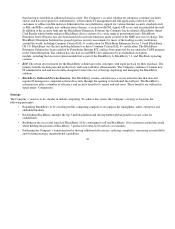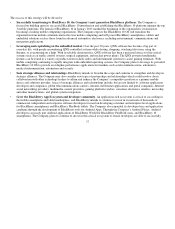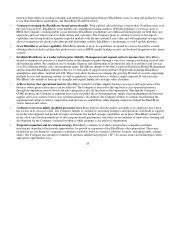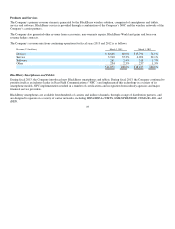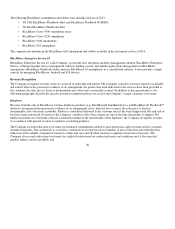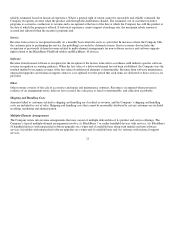Blackberry 2013 Annual Report Download - page 19
Download and view the complete annual report
Please find page 19 of the 2013 Blackberry annual report below. You can navigate through the pages in the report by either clicking on the pages listed below, or by using the keyword search tool below to find specific information within the annual report.
Industry Background
The Wireless Communications Industry
The wireless communications industry involves the provisioning of wireless voice and data services using radio frequency
technologies (RF) on a variety of competing wireless networks. These networks are typically comprised of a distinct voice layer upon
which data transmission layers have been subsequently installed. The most widely deployed wireless voice and data networks include
GSM/GPRS/EDGE/HSPA and CDMA/1xRTT/EVDO. The two primary international voice and data networks
GSM/GPRS/EDGE/HSPA and CDMA/EVDO continue to be upgraded to offer greater speeds and increased abilities to support
subscriber concentration in the same and new RF spectrums. The rollout of these technologies is well underway and commercially
available in many markets around the world.
Fiscal 2013 saw the continued uptake and expansion of next generation ‘4G’ networks, including HSPA+, WiMax and LTE. These
networks offer a number of improvements over the previous generations, with improved download and upload speeds being the most
widely promoted. Wireless carriers in the United States have been aggressively deploying and marketing these “4G” networks.
Deployment of these networks remains relatively limited globally, but wireless operators in many international markets are expected
to move aggressively to these new networks in the coming years.
In addition to voice and data communications, the convergence of computing and personal entertainment capabilities is also occurring
on wireless communications devices across the industry. Most BlackBerry smartphones in the market today incorporate multimedia
capabilities that include music, video recording and playback, camera, and access to games, content and other applications.
Wireless Communications Industry Markets and Segments
Historically, the wireless communications market has been highly segmented. Where previously the market was segmented into
distinct enterprise and consumer/prosumer segments, the market has increasingly evolved in recent years and there is now significant
overlap between the segments. The enterprise market is now characterized by a combination of enterprise deployed devices and
devices that are purchased by consumers but also used in the corporate environment, commonly referred to as “Bring Your Own
Device” (“BYOD”). These consumer devices are supported in a corporate environment by IT departments for access to corporate
messaging and data applications. The Company has encountered challenges adapting to the BYOD movement as some IT
departments that previously required employees to use the BlackBerry wireless solution because of its emphasis on security and
reliability are permitting employees to choose devices offered by the Company’s competitors, who are increasingly promoting the
merits oft their own security and reliability. To capitalize on this market, the Company has introduced products to take advantage of
this market shift including BlackBerry 10 smartphones with BlackBerry
12


